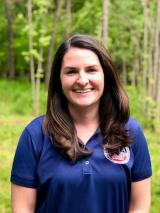Homeland Security Research Webinar Series
The Homeland Security Research Program offers free webinars typically held on the second Wednesday of the month on a quaterly basis.
The webinars communicate the latest information on research supporting EPA's response to chemical, biological and radiological incidents and natural disasters. This forum allows EPA to communicate directly with partners and stakeholders to foster collaboration and dissemination of information.
NOTE: Attendees have the option of receiving a certificate of attendance. Acceptance of certificates is contingent on organization requirements—EPA cannot guarantee acceptance. Closed-captioned recordings of the webinars are provided below for later viewing and as a training resource; certificates cannot be provided for viewing webinar recordings. Webinar dates and topics are subject to change.
Upcoming Webinar
COVID-19: UV-C Devices and Methods for Surface Disinfection
January 21, 2021, from 2:00 to 3:00 PM ET
Register for the webinar here.
Reducing the risk of exposure to SARS-CoV-2 relies on effective cleaning and disinfection, along with continued social distancing practices. EPA researchers are evaluating innovative ways to disinfect large spaces (e.g., schools, businesses, mass transit), including the use of alternative methods to kill viruses such as ultraviolet light (UV-C) that claim to reduce or eliminate virus transmission via surfaces. Because these disinfection devices can be considered pesticide devices, they are regulated by EPA under FIFRA, but they do not require registration and therefore their efficacy claims are not reviewed or verified by EPA. In the absence of third-party assessments, EPA is conducting research to understand which technologies reduce the amount of SARS-CoV-2 on surfaces.
Researchers are assessing UV-C methods and technologies on multiple materials against SARS-CoV-2 and potential surrogate viruses. This information will provide stakeholders with data on the effectiveness of these products in reducing SARS-CoV-2 on surfaces. EPA is working collaboratively with the Los Angeles Metropolitan Transportation Authority to test these devices in unused railcars to determine feasibility and effectiveness in real-world application.
Presenter Bios:
Dr. Katherine Ratliff is a physical scientist in EPA Office of Research and Development (ORD) Center for Environmental Solutions and Emergency Response. Her current research is focused on understanding and quantifying how contaminants move around in the environment, as well as predicting the efficacy of different decontamination and disinfection practices in complex settings. She is achieving these research goals by developing models that are informed by advanced data collection (in the lab and field settings) and analysis techniques. Katherine received her B.A. in Earth and Environmental Sciences from Vanderbilt University and a Ph.D. in Earth and Ocean Sciences from Duke University.
Dr. Lukas Oudejans is a Research Physical Scientist with the EPA ORD's Center for Environmental Solutions and Emergency Response. Over the past twelve years, he has gained vast experience in homeland security programs related to research, development and evaluation of innovative technologies for the decontamination of materials contaminated with chemical or biological agents. Currently, he is leading research efforts to assess alternative disinfection technologies like UV light, ozone and steam to clean surfaces contaminated with the SARS-CoV-2 virus. Dr. Oudejans holds a Ph.D. in Experimental Physics from Radboud University, Nijmegen, The Netherlands.
Previous Webinar Archive
|
EPA Homeland Security Research Webinar Archive |
||
|---|---|---|
|
Year |
Presenter(s) |
Title |
|
2020 |
Timothy Boe | Virtual Reality: A Training Tool for Biological Sampling (November 12) |
|
2020 |
|
COVID-19 Long Lasting Disinfectants (August 27) |
|
2020 |
|
|
|
2019 |
||
|
2018 |
|
Premise Plumbing Research in EPA's Homeland Security Research Program |
|
2018 |
|
Removal of Organic Contaminants from Polyethylene Drinking Water Pipes by Flushing |
|
2018 |
||
|
2017 |
Water Security Toolkit |
|
|
2017 |
||
|
2016 |
Full scale demo of rad decon, mitigation, and containment – Columbus demo presentation. |
|
|
2016 |
John Hall |
Results from Studies at the Water Security Test Bed |
|
2016 |
Evaluation of Chemical-Based Technologies for Removal of Radiological Contamination from Building Material Surfaces |
|
|
2015 |
Dr. James Goodrich |
|
|
2015 |
Dr. John Griggs (ORIA) Kathy Hall (NHSRC) |
NHSRC & ORIA's Efforts to Enhance US Radiochemistry Capacity and Capability |
|
2015 |
||
|
2015 |
Dr. Shannon Serre |
Overview of Methodologies for Decontamination of Sensitive Equipment |
|
2015 |
Waste Estimation Support Tool |
|
|
2014 |
|
|
|
2014 |
|
Remediation of Soils Contaminated with Bacillus anthracis Spores |
|
2014 |
||
|
2014 |
Decontamination Strategy and Technology Selection Tool (DeconST) |
|


